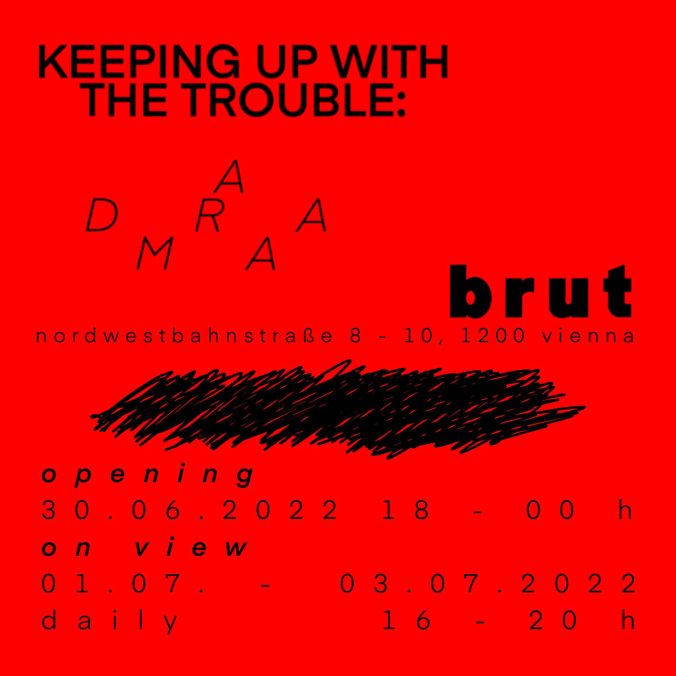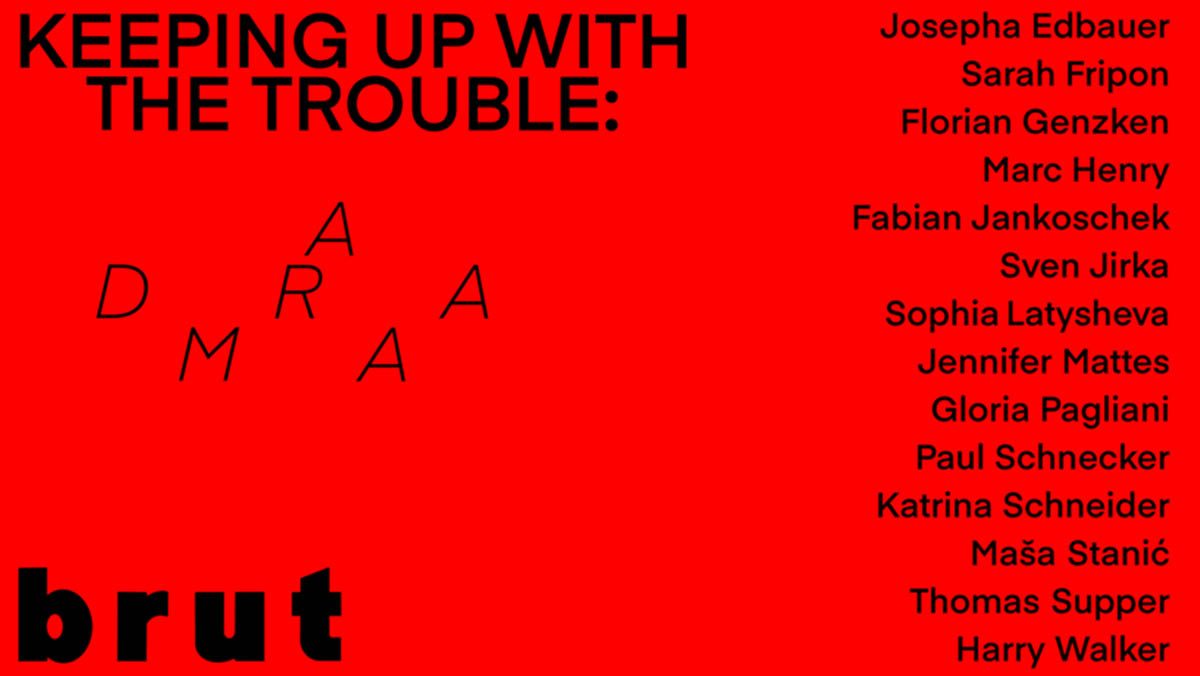
Die Räume des Theaters werden während der spielfreien Zeit als Ausstellungsfläche genutzt und mit Arbeiten aus den Sparten Malerei, Installation, Video, Objekt und Fotografie konfrontiert. Die durch seine ursprüngliche Bestimmung als Produktions- und Lagerstätte bedingte Eigenheit des Raumes, lädt zum improvisieren ein. Eine Performance als solche ist nicht wiederholbar und ähnelt keiner vorangegangenen oder nachfolgenden, jede ist einzigartig und besteht aus einer Reihe von Momenten, die zwar nach dem gleichen Schema ablaufen, aber nicht wiederholt werden können. Auch die Ausstellung Keeping Up With The Trouble: A Drama ist eine Reihung von Momenten und den Raum, der die Besucher*Innen von den Werken trennt, ist als Möglichkeitsraum, als Bühne zu verstehen.
So betreten die Betrachter*innen das Brut als einen performativen Raum und finden sich in der Stille einer Ausstellungsumgebung ein, bewegen sich zwischen den Werken, sind die mobile Komponente in einer statischen Umgebung, laufend verändern sie ihre Distanz und Position zu anderen Besucher*Innen und den ausgestellten Werken. Der Ausstellungsbesuch ist ein spannungsreiches Wandeln durch den Raum, in dem sich Bewegung (als Aktion) und Stillstand (als Pose) abwechseln.
Was die Halle für die Austellungsmacher*innen besonders interessant macht, ist ihre frühere Funktion, ihre heutige Nutzung und baldige Nicht-Existenz. Während im benachbarten Nordwestbahngelände Waren gelagert und gehandelt werden und Dinge die/den Besitzer*In wechseln, ermöglicht die Ausstellung im Brut eine gemeinsame Erfahrung des nicht-kommerziellen Konsums. Die Werke werden in der ehemaligen Lagerhalle, die als Plattform dient, „gelagert“, die Besucher*Innen bewegen sich zwischen ihnen, konsumieren sie auf eine nicht-physische Weise: tauschen Gedanken, verhandeln Ideen.
Ausstellung: Keeping up with the trouble: A drama
Künstler*innen: Josepha Edbauer, Sarah Fripon, Florian Genzken, Marc Henry, Fabian Jankoschek, Sven Jirka, Sophia Latysheva, Jennifer Mattes, Gloria Pagliani, Paul Schnecker, Katrina Schneider, Maša Stanić, Thomas Supper, Harry Walker
Vernissage: 30.06.2022 / 18 – 24h
Öffnungszeiten täglich von 01.07. – 03.07.2022 von 16 – 20h
Adresse: brut nordwestbahnstraße 8 – 10, 1200 Wien




